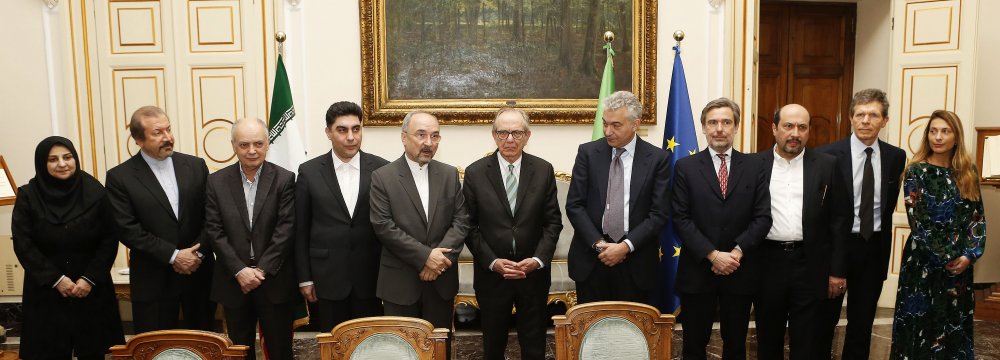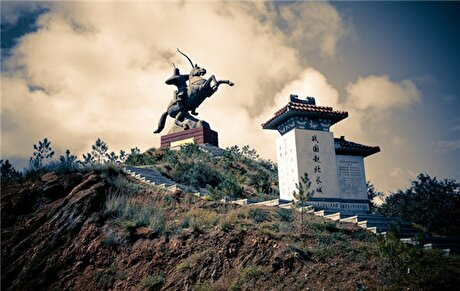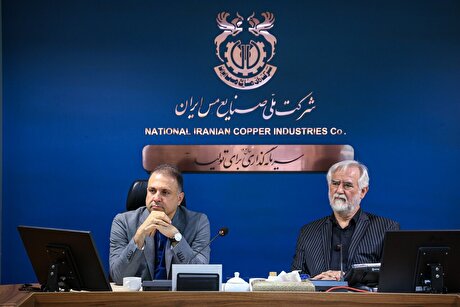
Iran, Italy Conclude €5 billion Finance Deal

The agreement was inked between two Iranian banks, namely Bank of Industry and Mine and Middle East Bank, and Invitalia Global Investment, the investment arm of the Italian state-owned holding, Invitalia, in a signing ceremony attended by the Italian Minister of Economy and Finance Pier Carlo Padoan and the director of Organization for Investment, Economic and Technical Assistance of Iran, Mohammad Khazaei.
"The Master Credit Agreement provides general terms and conditions which will govern each future financing agreement (Facility Agreement) concluded between Invitalia Global Investment and the Iranian banks," the Italian economy ministry announced in a press release, adding that the Iranian government will issue sovereign guarantees to cover the agreement.
The funds will cover projects and partnerships in Iran jointly implemented by Iranian and Italian companies in areas of mutual interest such as infrastructure and construction, oil and gas, power generation, and chemical, petrochemical and metallurgical industries, according to the Italian ministry.
The ministry further refers to the agreement as "an important step for the consolidation of the economic and financial partnership between the two countries" and says its primary objective is "to strengthen the Iranian economic fabric, in line with the objectives set out by the Iranian Government and the legitimate aspirations of the Iranian people" following the implementation of the nuclear deal in Jan. 2016 formally known as the Joint Comprehensive Plan of Action.
According to the Central Bank of Iran, other Iranian banks will be able to join the agreement in the future and construction and manufacturing projects employing technology, machinery or technical and engineering services from Italy will be able to tap into the resources of the credit line.
"All state-owned and private sector projects whose priority has been approved by relating entities and have obtained the relating permits will be able to use the facilities," the monetary regulator who has been an active component of all foreign finance deals struck with Iran, announced in its own press release.
Using the resources of the Italian credit line will be in line with internal rules and regulations, especially those of the Sixth Five-Year Development Plan (2017-22) and the annual budgets, added the central bank.
After India, China, South Korea, Denmark, Austria and Russia, Italy has now become the seventh country to finance Iran’s projects, helping Iran in diversifying its foreign finance options to bankroll internal projects.
Hoping for a Brighter Future
Governor of the central bank on Friday reacted to the Italian deal and said in addition to financial various Iranian projects that will play their own vital role in creating jobs and improving welfare of Iranians, the deal has a political side in that it showcases a positive foreign outlook toward Iran's future.
"Signing of these kinds of deals shows that various countries have sufficient confidence in the economic stability and financial capability of Iranian companies and banks in the long run and that is why they have accepted to sign such long-term agreements with Iranian banks," Valiollah Seif also wrote in his channel in the instant messaging app Telegram.
He concluded, however, by saying that no amount of foreign finance will yield results if the country succumbs to disappointment and despair, and urged everyone to have and practice "hope for the future".
Meanwhile, the deputy head of the central bank's Department for Foreign Exchange Credits has made brief remarks on the loans to be allocated as part of the finance deal.
“Conditions for getting a loan from the Italian credit line are better than those offered by the National Development Fund of Iran offers,” Hamid Qanbari was quoted as saying by IBENA.
The official noted that projects wishing to employ the credits will require a license from the Economy Council, affiliated with the Ministry of Economic Affairs and Finance.
Among EU nations, Italy is a major trade partner for Iran. With more than €2.58 billion worth of purchases, Italy was the main export destination for Iranian products during the 10 months to Oct. 31, 2017, registering a significant 315% increase compared with the corresponding period of 2016.
The European nation was also the second biggest exporter to Iran among other EU member states during the same period after Germany, as it shipped €1.38 billion worth of commodities to Iran, up 14.5% year-on-year.


Energy Fuels soars on Vulcan Elements partnership

China extends rare earth controls to imported material

Galan Lithium proceeds with $13M financing for Argentina project

Northern Dynasty sticks to proposal in battle to lift Pebble mine veto

Ukraine launches tender for major lithium deposit

KoBold Metals granted lithium exploration rights in Congo

Freeport Indonesia to wrap up Gresik plant repairs by early September

Critical Metals signs agreement to supply rare earth to US government-funded facility

Kyrgyzstan kicks off underground gold mining at Kumtor

Equinox Gold kicks off ore processing at Valentine mine

India considers easing restrictions on gold in pension funds

Luca Mining expands Tahuehueto mine with Fresnillo land deal

Kyrgyzstan kicks off underground gold mining at Kumtor

Ukraine launches tender for major lithium deposit

KoBold Metals granted lithium exploration rights in Congo

Freeport Indonesia to wrap up Gresik plant repairs by early September

Energy Fuels soars on Vulcan Elements partnership

Northern Dynasty sticks to proposal in battle to lift Pebble mine veto

Giustra-backed mining firm teams up with informal miners in Colombia

India considers easing restrictions on gold in pension funds

Luca Mining expands Tahuehueto mine with Fresnillo land deal

Kyrgyzstan kicks off underground gold mining at Kumtor

Ukraine launches tender for major lithium deposit

Freeport Indonesia to wrap up Gresik plant repairs by early September

Energy Fuels soars on Vulcan Elements partnership

Northern Dynasty sticks to proposal in battle to lift Pebble mine veto

Giustra-backed mining firm teams up with informal miners in Colombia

Critical Metals signs agreement to supply rare earth to US government-funded facility

















